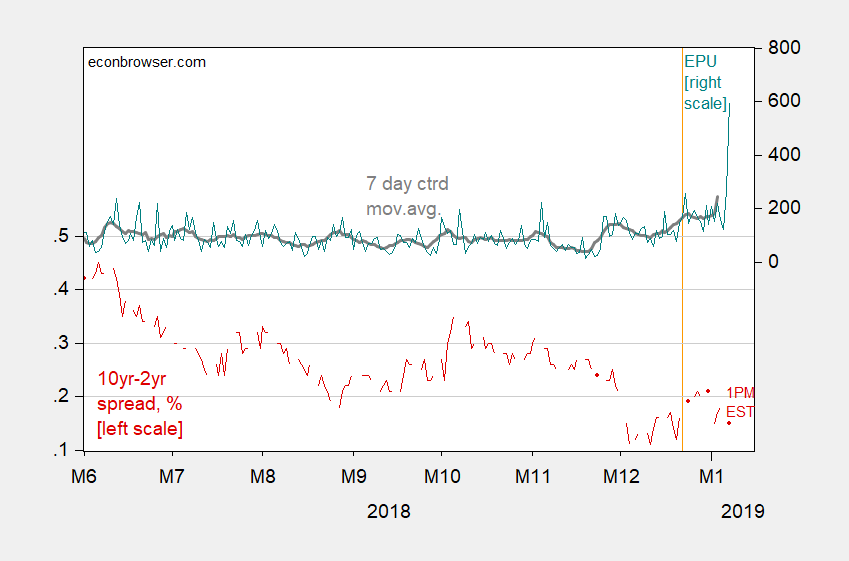That’s the title of a new paper, coauthored with Jeffrey Frankel, using data extending back to August 1986.
Continue readingJindal-nomics Illustrated
In response to my graph of Louisiana GDP, Manfred asks:
Continue readingMeasured Uncertainty and Treasury Spreads, 1/7/19

We Can Make Mexico Pay for the Wall
Just declare an International Emergency. From US Treasury,
U.S.C. annotated, Title 50. War and National Defense Chapter 35. International Emergency Economic Powers :
Treasury Spreads and Measured Policy Uncertainty
Do they matter?
Continue readingEmployment Estimates in the Run-up to the 2001 Recession
Employment Release: We Are Now Back to the 2016 Stochastic Trend
Louisiana’s Economic Progress since 2005
It’s striking. GDP correlates with oil in recent years, but not always, so why didn’t the magic of Jindalnomics work?
Continue readingWill Dave Brat Do More Damage in Academia than in Congress?
Brat to Liberty University…
Continue readingGuest Contribution: “New Year questions about the economic outlook”
Today, we present a guest post written by Jeffrey Frankel, Harpel Professor at Harvard’s Kennedy School of Government, and formerly a member of the White House Council of Economic Advisers.
Continue reading